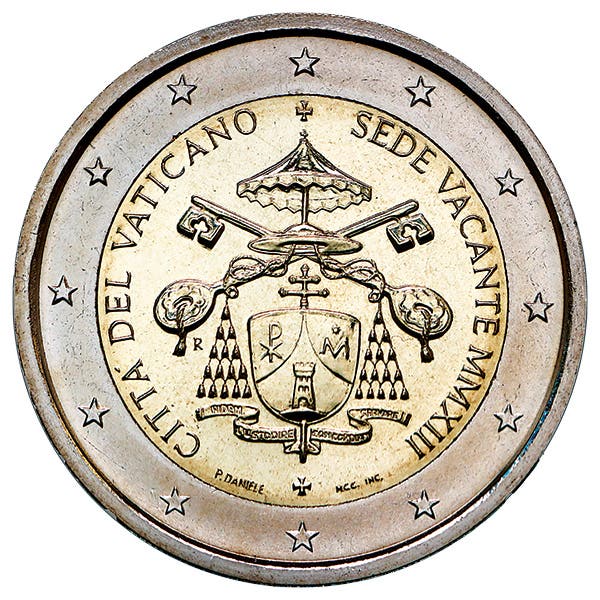Coins Reminder of Unsuccessful Revolt
The well-worn coins were discovered by archaeologists studying the Himmelpforten monastery near the town of Wernigerode in Saxony-Anhalt.
Four late medieval gold coins recently discovered at the ruins of a monastery in Germany tell the tale of a mostly forgotten tumultuous time in central European history.
The well-worn coins were discovered by archaeologists studying the Himmelpforten monastery near the town of Wernigerode in Saxony-Anhalt. According to the news agency Deutsche Presse-Agentur, Wernigerode is known for its well-preserved historic center, colorful medieval buildings, and its 12th-century castle.
Wernigerode is situated at the Holtemme and Zillierbach rivers, north of the Harz Mountains and southwest of Magdeburg. Wernigerode is first mentioned in 1121. The town was chartered in 1229 and joined the Hanseatic League in 1267. In 1429 the town became the seat of the Counts of Stolberg, then by the Counts of Stolberg-Wernigerode. The town castle was first mentioned in 1213. The Rathaus or town hall dates from about 1494 to 1498.
The Himmelpforten monastery was established prior to 1253 by the von Hartesrode family. At one time, the monastery was occupied by Augustinian hermits. German priest, theologian, and Augustinian friar Martin Luther, an important figure in the Protestant Reformation, visited the monastery in 1516. The monastery was abandoned during the Reformation.
Saxony-Anhalt State Office for Monument Preservation and Archeology project manager and archaeologist Felix Biermann said he believes the coins were likely hidden hastily by the monks when the monastery was stormed by rebellious peasants in 1525 during the Peasants’ War.
The German Peasants’ War, Great Peasants’ War, or Great Peasants’ Revolt spread throughout German areas of Central Europe between 1524 and 1525. It was the largest such revolt in Europe prior to the French Revolution of 1789. The revolt failed, resulting in the slaughter of an estimated 100,000 of the 300,000 peasants and farmers and the ensuing starvation of even more due to crops having been decimated during the conflict. The revolt was instigated by radical reformers, including Thomas Müntzer and Huldrych Zwingli. Luther condemned the revolt as being the work of the devil, calling for the nobility to put down the rebels like mad dogs. This is documented in Luther’s book “Against the Murderous, Thieving Hordes of Peasants.”
Biermann told DPA, “The gold coins were of great value, and the small fortune was probably hidden by a monk in an acutely dangerous situation. The whole thing did not end well because the coins could not be recovered.”
The four coins are each gold guilder, each issued from within the Holy Roman Empire. The find includes a single guilder struck prior to 1413 in the name of Holy Roman Emperor Frederick III at Frankfurt, another struck in the name of the emperor at Schwabach in Bavaria, and two struck between 1480 and 1481 at the HRE mint at Bonn.
The context in which the coins were found wasn’t available at the time this article was being written, however, non-numismatic 13th to 16th-century artifacts accompanied the four gold pieces. These included brass book clasps from the monastery library, ceramics, animal bones, a cavalry spur, and decorative cloth seals made of lead. Archaeologists said the artifacts indicate there had been large-scale trade and a prosperous monastic community.
It has been noted by historians that the Holy Roman Empire was not holy, it wasn’t Roman, and it was a political entity whose emperor was appointed by princely electors rather than being a true empire. The HRE lasted for almost a thousand years, being dissolved in 1806.
The Great Peasants’ Revolt was triggered by peasants invoking divine law to demand agrarian rights and freedom from oppression by their landlords and nobles. A rise in Christian Humanism led by Desiderius Erasmus questioned the treatment of society under Christianity. The Protestant Reformation of 1517 influenced the move for a revolt by the peasantry. Some of the poorly armed groups were organized into armies. These peasant armies were defeated primarily by the army of the Swabian League. The ultimate result was further repression and restriction of the peasantry. The rebels did not issue any coins of their own.








